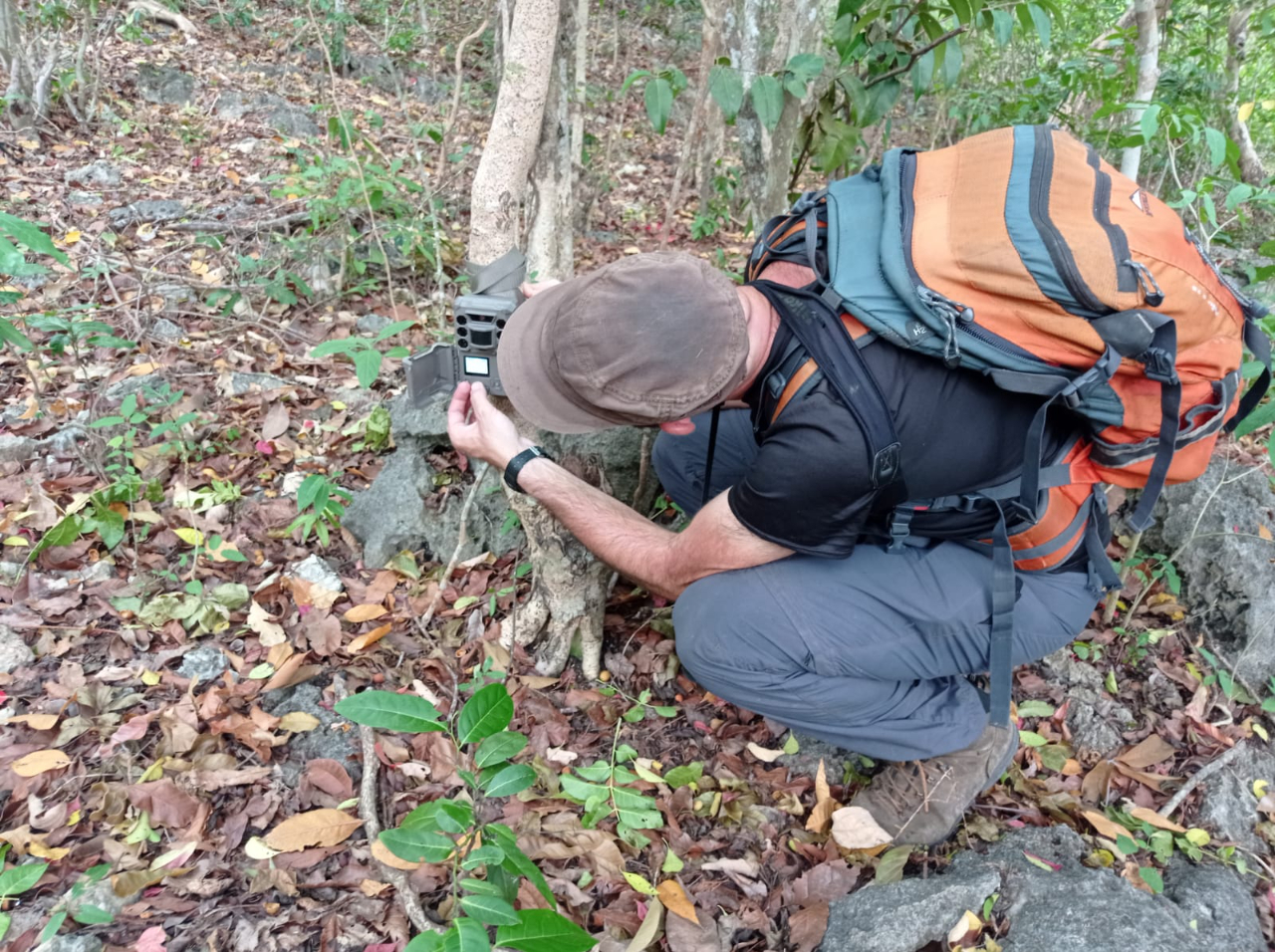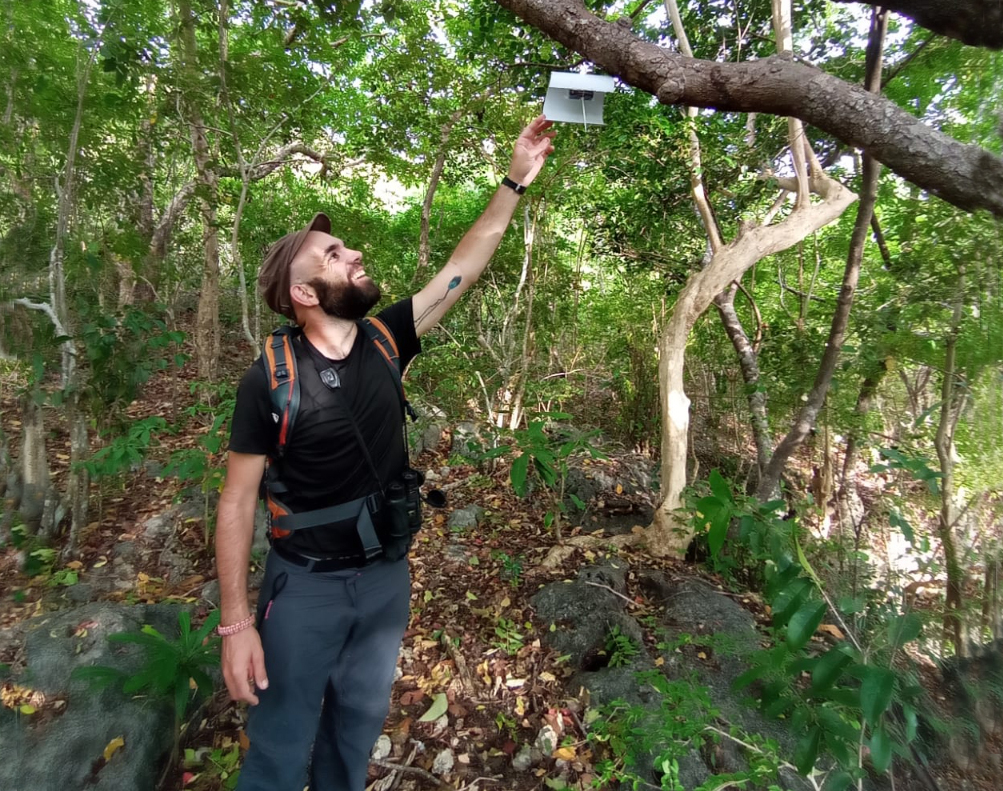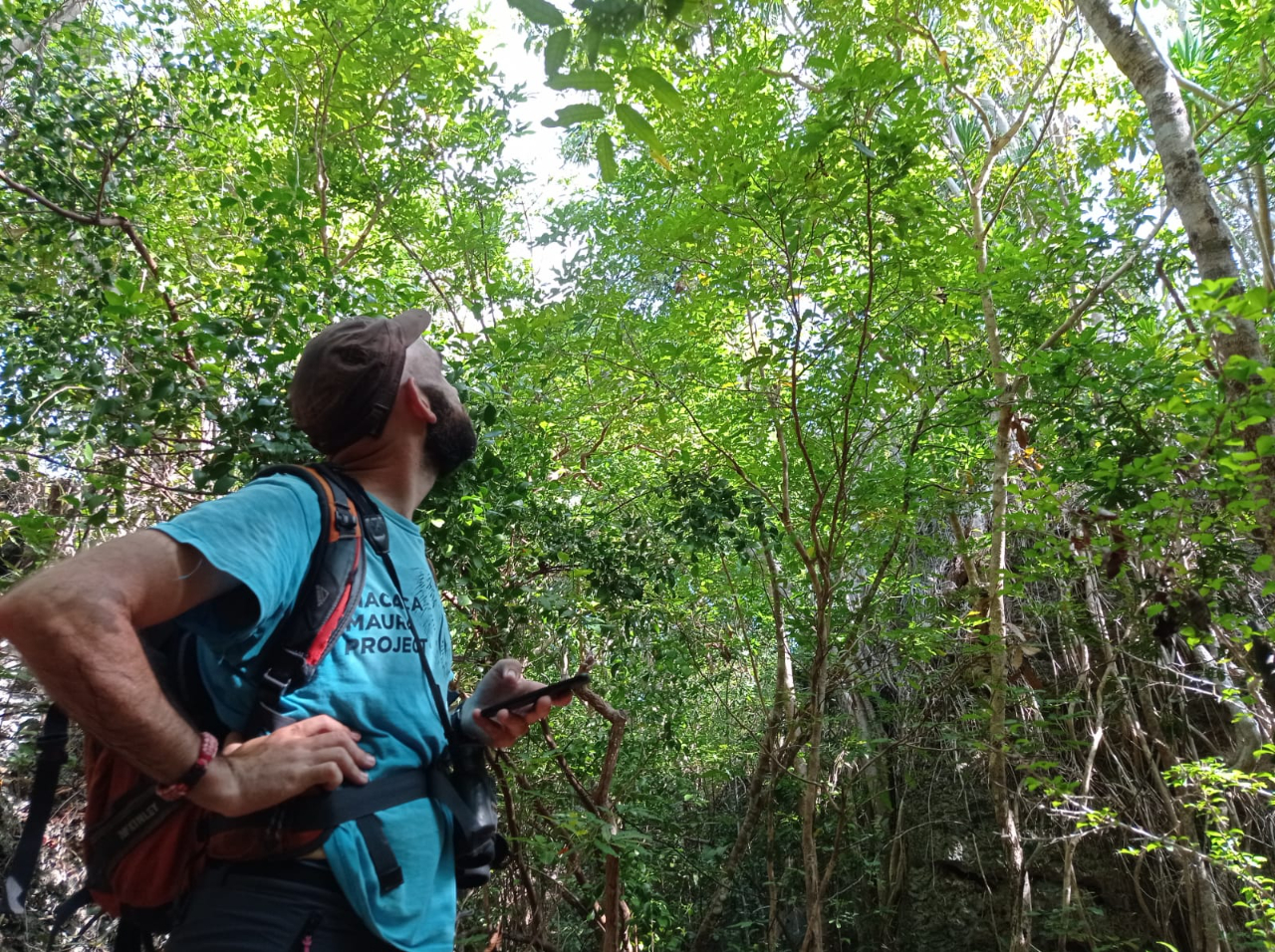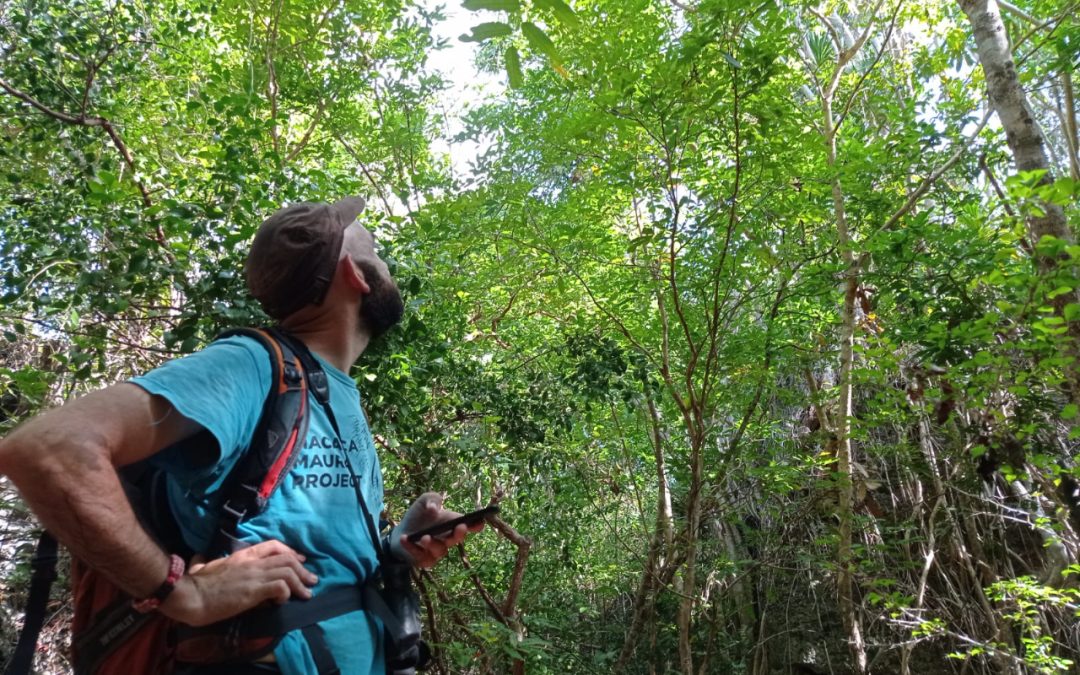Since 2022, we are surveying the presence of moor macaques along South Sulawesi. This project aims to contribute to the conservation of this endangered species by updating their population status. The last moor macaque population survey was carried out prior to 1990 (Supriatna et al., 1992). With the high rate of deforestation in South Sulawesi in the last 30 years, the distribution and abundance of the moor macaque is expected to be significantly smaller than in the last survey. Facing this situation, the IUCN specialist group is asking for an urgent update of the moor macaque population status to develop targeted and objective conservation strategies on the species.
Moor macaque inhabit the dense forest of South Sulawesi, nowadays restricted to the mountain areas where anthropogenic activity (such as agriculture or urbanization) remains low or absent. Therefore, detecting moor macaques may be difficult by using traditional methodologies such as point transects. Previous to our survey, we carried out a pilot study to determine the best methodology to detect the moor macaque in the dense forest of South Sulawesi. For that, between November 2022 and January 2023, we compared the detectability of moor macaque using two conservation technology methodologies (Camera traps and AudioMoths) and one traditional methodology (Point transects). The results of this study will inform about which methodology is better to study the presence of the species, saving time and effort during the field work, and increasing the precision of the results which are key to understand the population status of endangered species. Do you want to know what we found in our study? Follow us! We will share the results with our community soon.

Camera Traps

AudioMoths


